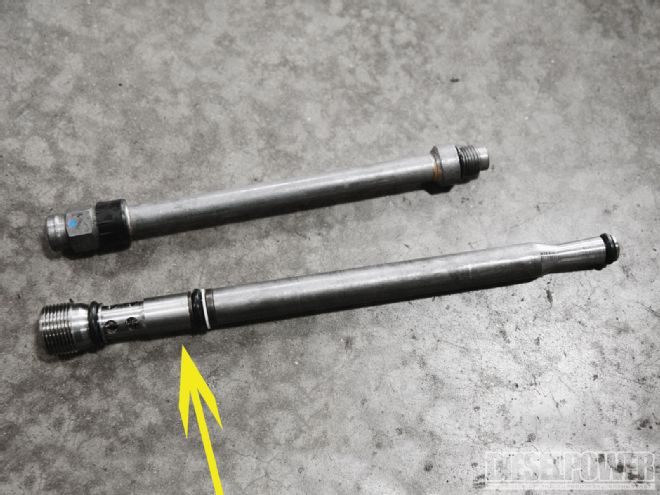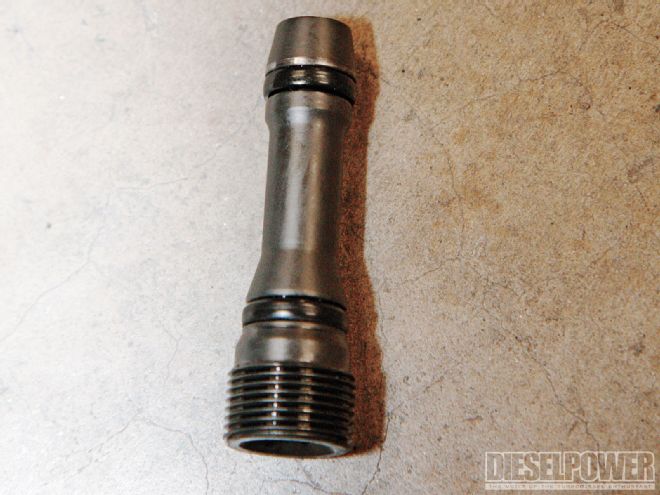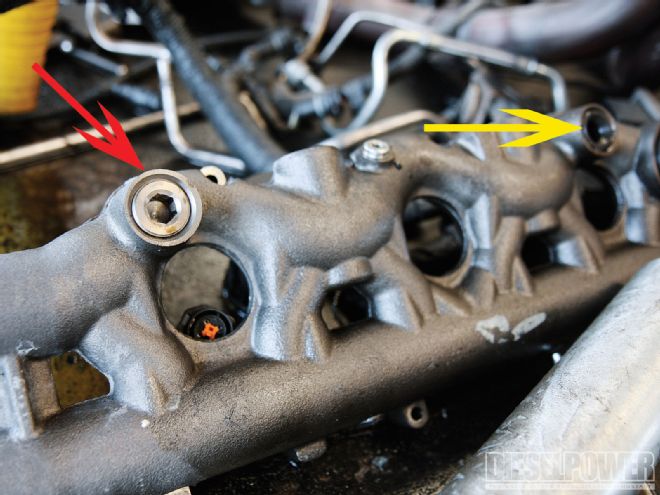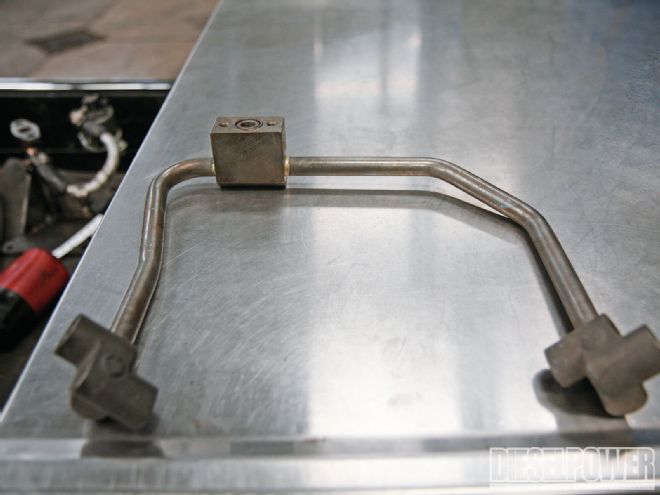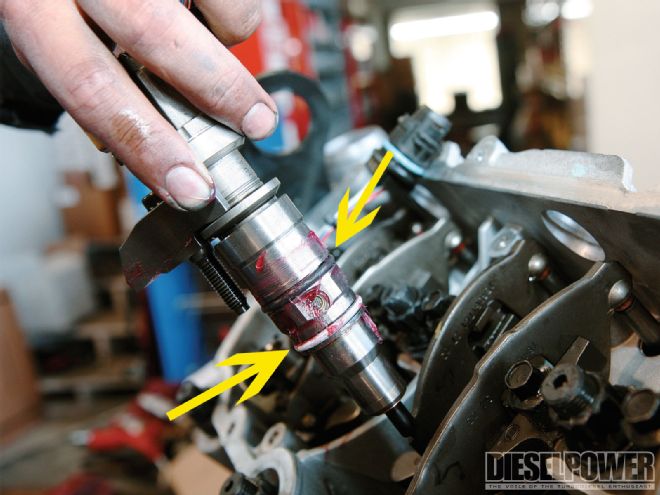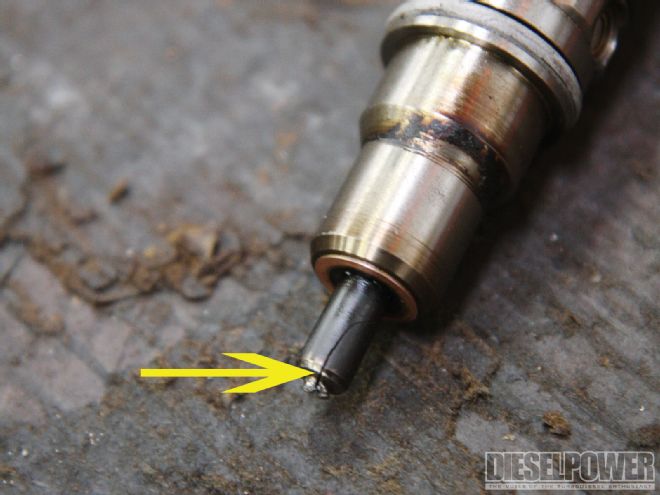Beyond the 6.0L Power Stroke’s head gasket, EGR system, and oil cooler problems lies a host of injection system issues. The high-pressure oil system used to fire the injectors is fraught with minor component failures, which are often accompanied with little or no warning. While most of these problems don’t lead to catastrophic engine damage, they can still leave you stranded.

| 1301dp 01 Dead In The Water Ford Crew Cab Super Duty
Ford implemented a lot of changes in the 6.0L’s short, five-year production run to try to remedy multiple issues. Some of the changes helped improve the engine’s serviceability and reliability, while others did more harm than good. For example, redesigned oil rails implemented on late-’04 engines became notorious for failed O-rings, which cause performance-hindering leaks in a system that relies on uncorrupted, high-pressure oil to operate.
This month, we’ve highlighted all the common failure points in the ’03 to ’07 Power Stroke’s hydraulically activated injection system. Read on to see what you need to know to properly diagnose, detect, and fix your high-pressure oil issues.
STC Fitting (’05 to ’07 engines)
One of the single most common high-pressure oil-related problems for ’05 to ’07 engines lies with the STC (snap to connect) fitting that attaches the high-pressure oil branch tubes to the outlet side of the high-pressure oil pump. When the branch tubes flex, the two-piece fitting wears out the seal prematurely, causing a slight oil leak. It’s common for the truck to start when cold, but not when warm. This is because cold, thick oil is less prone to leaking past the seal, whereas warm oil is thinner (lower viscosity) and will slip past the seal, making it harder for the injection system to build the adequate injection control pressure (ICP) required to fire the injectors. Eventually, the hard-start scenarios will turn into a no-start situation, once the fitting separates completely (pictured). This leaves you stranded regardless what temperature the oil is.

| 1301dp 03 Dead In The Water Stc Fiting
Ford’s STC fitting update kit (PN 4C3Z-9B246-F) solves this issue by reverting back to a solid, threaded fitting, similar to what was used on ’03 and ’04 engines. The brace included in the kit helps keep the oil branch tubes from flexing. The update kits retail for $50 to $60, and Ford recommends performing the update any time the turbo, high-pressure oil pump, oil cooler, or EGR cooler is being replaced to rule out future issues.
High-Pressure Oil Leak Symptoms
Long crank, or no start
Starts cold, won’t start once warm
Sporadic idle
Surging under throttle
Rough idle once warm
High IPR duty cycle value
Low ICP value
Low power
High-Pressure Oil Leak Detection
Unfortunately, there is no quick fix for tracking down a high-pressure oil leak. With the commonality of high-pressure oil leaks so high on these engines, it pays to know how to locate the source of your problem once you’re under the valve covers. The proper way to test for a high-pressure oil leak is to remove the ICP sensor, make sure the IPR valve is closed, inject compressed air into the ICP sensor port, and listen for the leak.
Injector Stiction
It’s extremely common for 6.0L injectors to experience the cold start issue known as stiction (the words static and friction, combined). Stiction is caused by a delayed response in the spool valve (which allows oil into the injector to fire it) due to static friction being stronger than the magnetic force of the injector coils (remember, on each side of the injector there is a coil: one for closing and one for opening the spool valve). Because a higher oil viscosity will amplify the problem, cold starts are when it’s most noticeable (missing, bucking, smoking). Once the oil warms up and its viscosity is lower, the symptoms typically go away.

| 1301dp 10 Dead In The Water Rev X
Rather than replacing any injectors, many shops and truck owners turn to a lighter-weight, synthetic oil (5W-40 synthetic Rotella vs. 15W-40 conventional Rotella, for example). While that can help, an oil additive called Rev-X (shown) has all but become the industry standard for solving stiction issues. We’ve seen missing, stuttering, 6.0L engines idle into a shop, be treated to an oil change with two 4-ounce bottles of Rev-X included, and then pass a cylinder contribution test with flying colors before leaving.
